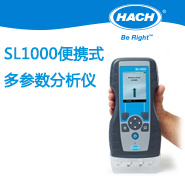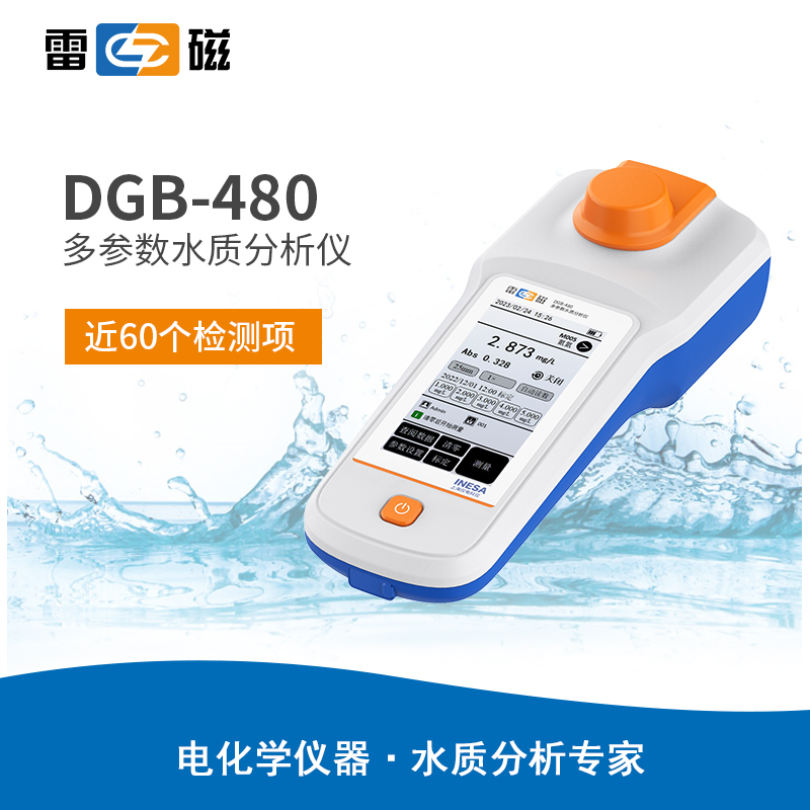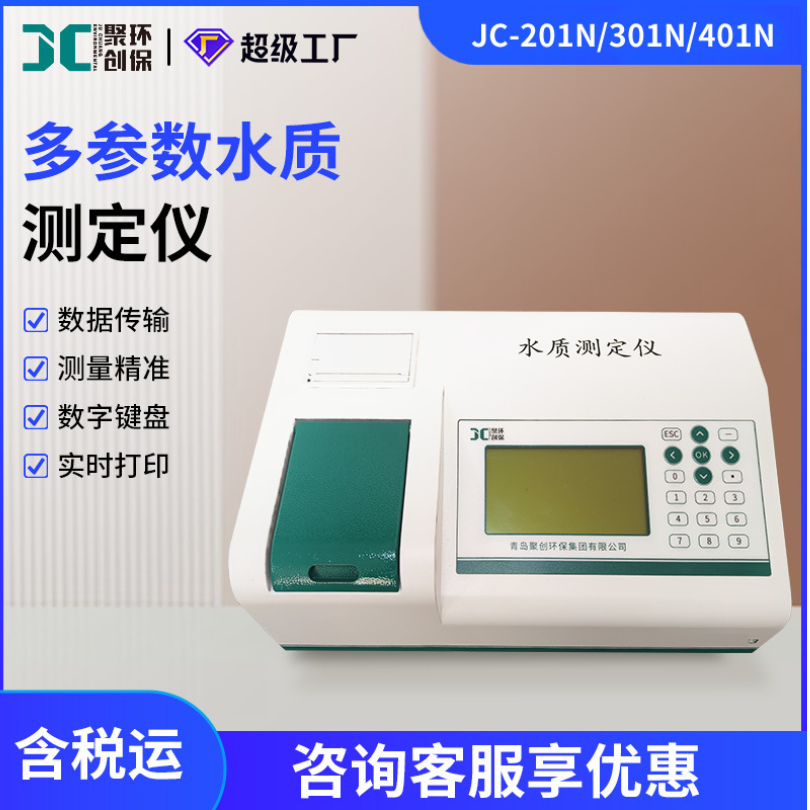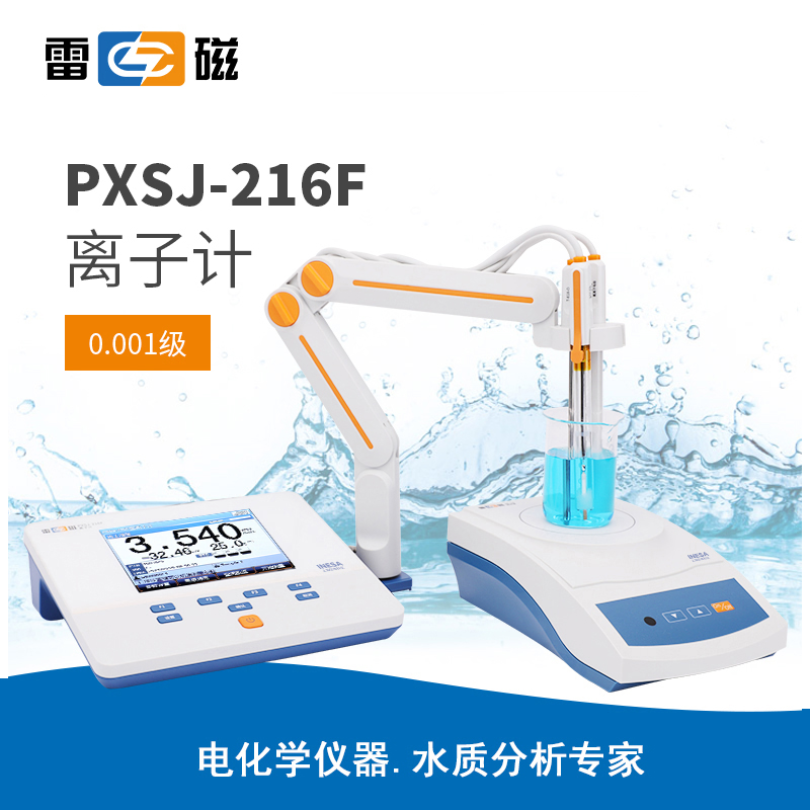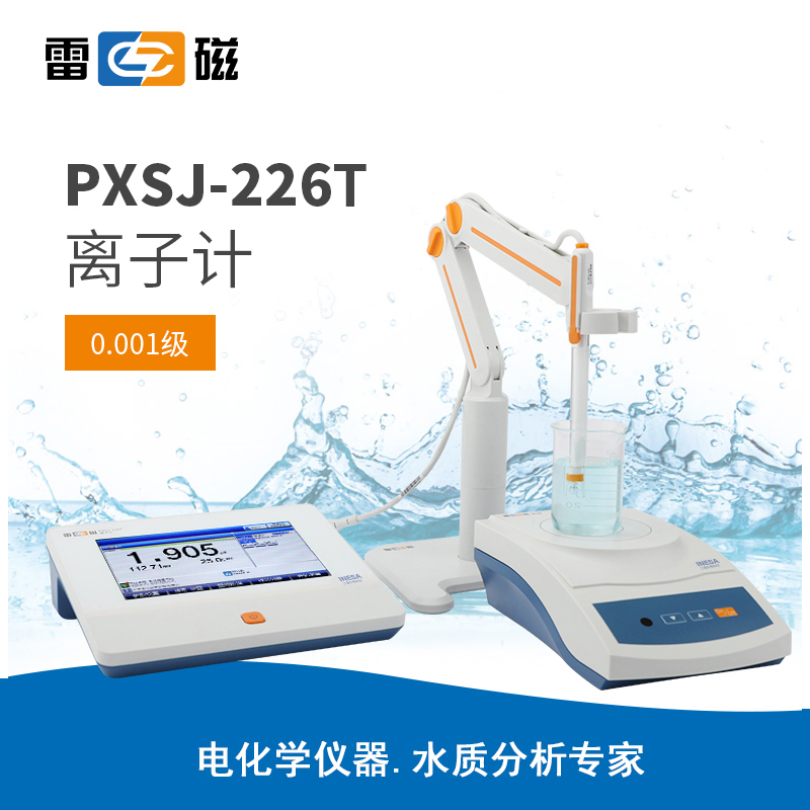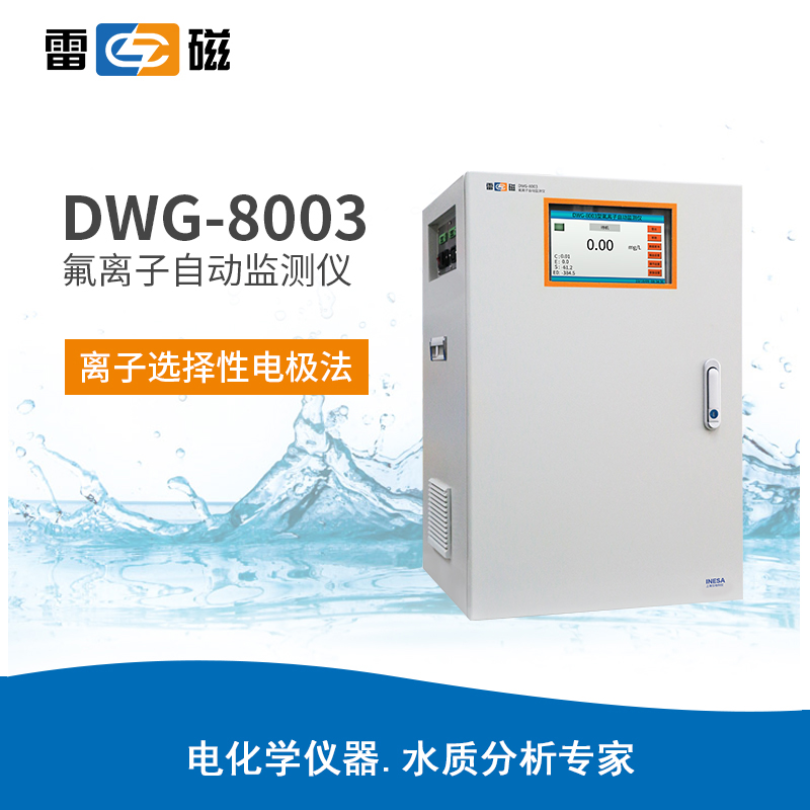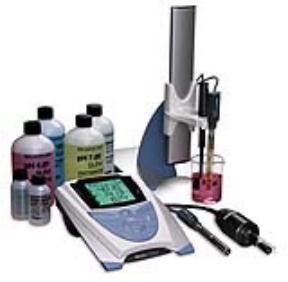
方案详情
文
本文章详细介绍了土壤中氯离子的测定,包括校准液、水样的准备,校准和测量过程,以及电极和仪表的维护等内容。
方案详情

Chloridein Soil Star SeriesMethod Note M-1017-E 03/05 RevB Chloridein Soil 4 Wait for stable reading (1-2minutes). Enter standard value of“10” using UP and DOWN arrow keysand the DECIMAL/DIGITkey.V. ·Chloride Introduction 5P.ress the CALIBRATE key to accept 10 ppm standard and press the STIRRER key to turnthe stirrer off. 6.Rinse electrode and stirrer thoroughly with deionized water. Gently remove excess solution from theouter sleeve of the electrode by dabbing with a clean paper tissue. Do not wipe or rub the sensingelement. ·Soils·Orion@ionplusSure-Flow Com-bination lon Se-lective ChlorideElectrode (ISE) This procedure measures chloride ion in aqueous extract of soil sample. The method provides rapid,uncomplicated determinations of the chloride ion in soil sample. The direct measurement of ions using ionselective electrodes is a well-established technique frequently used as a standard method of analysis. Thisprocedure eliminates interferences associated with presence of color and solids. Recommended Equipment CatNo. 7.Place the probes and stirrer into the beaker with the 100 ppm standard such that the electrode tip isfully immersed in the solution. The stirrer should be positioned slightly below the tip of the electrode.Press the STIRRER key on the meter to turn the stirrer on. Chloride in Soil Application Package (includes all items with a catalog number) 1010118 1. 4 Star benchtop pH/ISE meter 1115000 8.Wait for stable reading (1-2 minutes). Enter standard value of“100”using UP and DOWN arrowkeys and the DECIMAL/ DIGIT key. 2. ionplus° Sure-Flow combination chloride electrode 9617BNWP 3. Orion benchtop stirrer (or magnetic stir plate and bar) 096019 9P.ress the MEASURE key to accept 100 ppm standard and to move to the measure mode of the meter.Press the STIRRER key to turn the stirrer off. 4. Orion benchtop electrode stand 1110001 5. Volumetric flask (100 mL) 10. Rinse electrode and stirrer thoroughly with deionized water. Gently remove excess solution from theouter sleeve of the electrode by dabbing with a clean paper tissue. Do not wipe or rub the sensingelement of the electrode. Beakers (150 mL) 7. Graduated cylinder (100 mL) . Graduated cylinder (100 mL) 11. Place the probes and stirrer in a prepared sample such that the electrode tip is fully immersed in thesolution. Press the MEASURE key on the meter; the stirrer will turn on. The ISE: % icon will flashas the measurement is being made. The ISE: % icon will become solid and the display value willfreeze when a stable reading is achieved. This value is logged and printed automatically and the stirrerturns off automatically. 8. Pipette (1 mL, 2 mL, 10 mL) 9. Funnel 10. Filters (particle retention) 11. Watch glass 12. Repeat steps 10 and 11 for additional samples. Upon completion or samples, rinse electrode with deionized water and store the electrode according toinstructions in the Electrode Storage section of this method note. Required Solutions Cat No. Chloride activity standard, 100 PPM1.Chloride activity standard, 1000 PPM 941707 941708 3. Reference filling solution,Optimum results"“B” 900062 4.ISA (Ionic Strength Adjustor) for chloride electrode 940011 5.Deionized water Calibration Standard Preparation 1.Using a graduated cylinder, transfer 100 mL of the 100 ppm standard into a beaker. Add 2 mL ISA. 2 To prepare 10 ppm standard, pipette 10 mL of the 100 ppm chloride standard into a 100 mL volumetric flask. Dilute to the mark with deionized water. Mix well. 3. Using a graduated cylinder, transfer 100 mL of the 10 ppm standard into a beaker. Pipette 2 mL ISA. Sample Preparation ( Environmental Instruments Water Analysis Instruments ) ( 1 66 Cummings C enterBeverly, MA 01915 USAM-1917103/05 feYi 248077-0 0 1 ) Toll Free:1-800-225-1480Tel:1-978-232-6000Dom.Fax:1-978-232-6015IntlFax:978-232-6031www.thermo.com/waterO 2005 Thermo Electron Corporation RegisteredIS O9001:2000 1.Weigh accurately 10 g (+/-0.1 g) of dry, finely powdered soil sample into a beaker and, using agraduated cylinder, add 100 mL of deionized water. Add a stirring bar. Cover the beaker with a watchglass, stir for 30 minutes and filter. 2. Using a graduated cylinder, measure 50 mL of the sample into a beaker. Pipette 1 mL ISA. All rights reserved .33. Repeat this procedure for additional measurements. Results Five aqueous extract of soil sample are measured for chloride. The results on the meter are displayed as ppm ofchloride in the solution. The concentration of the chloride in soil is calculated as % (w/w) using the formula: Chloride Concentration, % (w/w)=Cppm/100*W, where Cppm -chloride concentration in extraction solution; W-sample weight Aqueous extract % Chloride Sample #1: 0.024 Sample #2: 0.025 Sample #3: 0.025 Sample #4: 0.026 Sample #5: 0.026 Mean: 0.025Standard Deviation: 0.00l%CV 3.32 Electrode Storage The solution in the chloride electrode should not be allowed to evaporate, causing crystallization. For shortperiod of time, between sample measurements, and up to one week, store the electrode in 100 ppm chloridestandard. For storage longer than one week or for indefinite period, drain the electrode. Flush the inside withdeionized water and store dry with the protective cap to protect the sensing element. Equipment Setup Electrode Setup-ionplus° 1.Remove the rubber cap covering the electrode tip. 2.Fill outer chamber with Optimum Results"" B filling solution. 3. Lift the filling solution bottle's spout to a vertical position. 4. Insert the spout into the filling hole in the outer sleeve of the electrode and add a small amount of fillingsolution to the chamber. Then tip the electrode to moisten the o-ring at the top and return electrode to avertical position. 5. Holding the electrode by the barrel with one hand, use the thumb to push down on the electrode cap,allowing a few drops of filling solution to drain wetting the inner cone. 6Release sleeve.7 If sleeve does not return to its original position immediately, check to see if the o-ring is moist and repeatsteps 4-6 until the outer sleeve has returned to its original position. Add filling solution just bellow thefill hole. Meter Setup-4 star benchtop For initial meter setup, follow the steps in the Quick Reference Guide, which is attached to the meter itself.The Quick Start Guide included with each meter also contains a layout of the meter keypad for reference. Thewords in this method represented in all capital letters, such as POWER, indicates a key on the meter, and wordsin quotations such as“Unit"indicates information on the meter display. 1.Connect the electrode to the meter. 2. Connect the stirrer to the meter. 3. Press the POWER key on the meter to turn the meter on. 4.Note that the arrow on the left of the screen indicates the active line. If the top line is not active, press theLINE SELECTION key to change the selected line to the top line. Then press the UP or DOWN arrowkeys to change the measurement mode of the top line to ISE. 5.1Press the SETUP key to enter ISE Setup. Press the LINE SELECTION key to select the bottom line.Press the UP or DOWN arrow keys to select“3”for "rES”which is an abbreviation for resolution ornumber of significant digits. Press the LINE SELECTION key to accept value. 6.Press the LINE SELECTION key to select the middle line, and press the DOWN arrow key to select“nLln”which is an abbreviation for non-linear blank correction. 7.Press the LINE SELECTION key to select the bottom line. Press UP or DOWN arrow keys to select“off”for“nLln". Press the LINE SELECTION key to accept value. 8.Press the LINE SELECTION key to select middle line, and press the DOWN arrow key to select “rAng”which is an abbreviation for measurement range. 9.Press the LINE SELECTION key to select the bottom line. Press the UP or DOWN arrow keys to select“HigH” for "rAng". Press the LINE SELECTION key to accept value. 10. Press the LINE SELECTION key to select middle line, and press the DOWN arrow key to select “Unit". 12. Press the LINE SELECTION key to select the bottom line. Press the UP or DOWN arrow keys to select“PEr"(%) for“Unit". Press the LINE SELECTION key to accept value. 13. Press the MEASURE key to return to the measurement mode. If all steps were followed correctly themeter display will show three digits in the top line and “"ISE: PEr" to the right of the top line. The meterand electrode are now ready for calibration. Note: The Orion Benchtop Stirrer must be turned on in General Instrument Setupbefore analysis, please see the Quick Start Guide for instructions. Calibration and Analysis 1. Allow all the standards and the samples to attain room temperature for precise measurements since themeasurement is temperature sensitive. 2 Calibrate the meter using the 10 ppm followed by 100 ppm standard, stirring the standards at a gentle anduniform rate. 3. Place the electrode and stirrer into the beaker with the 10 ppm standard such that the electrode tip is fullyimmersed in the solution. The stirrer should be positioned slightly below the tip of the electrode. Pressthe STIRRER key on the meter to turn the stirrer on. Press the CALIBRATE key. www.thermo.com of of of of
确定
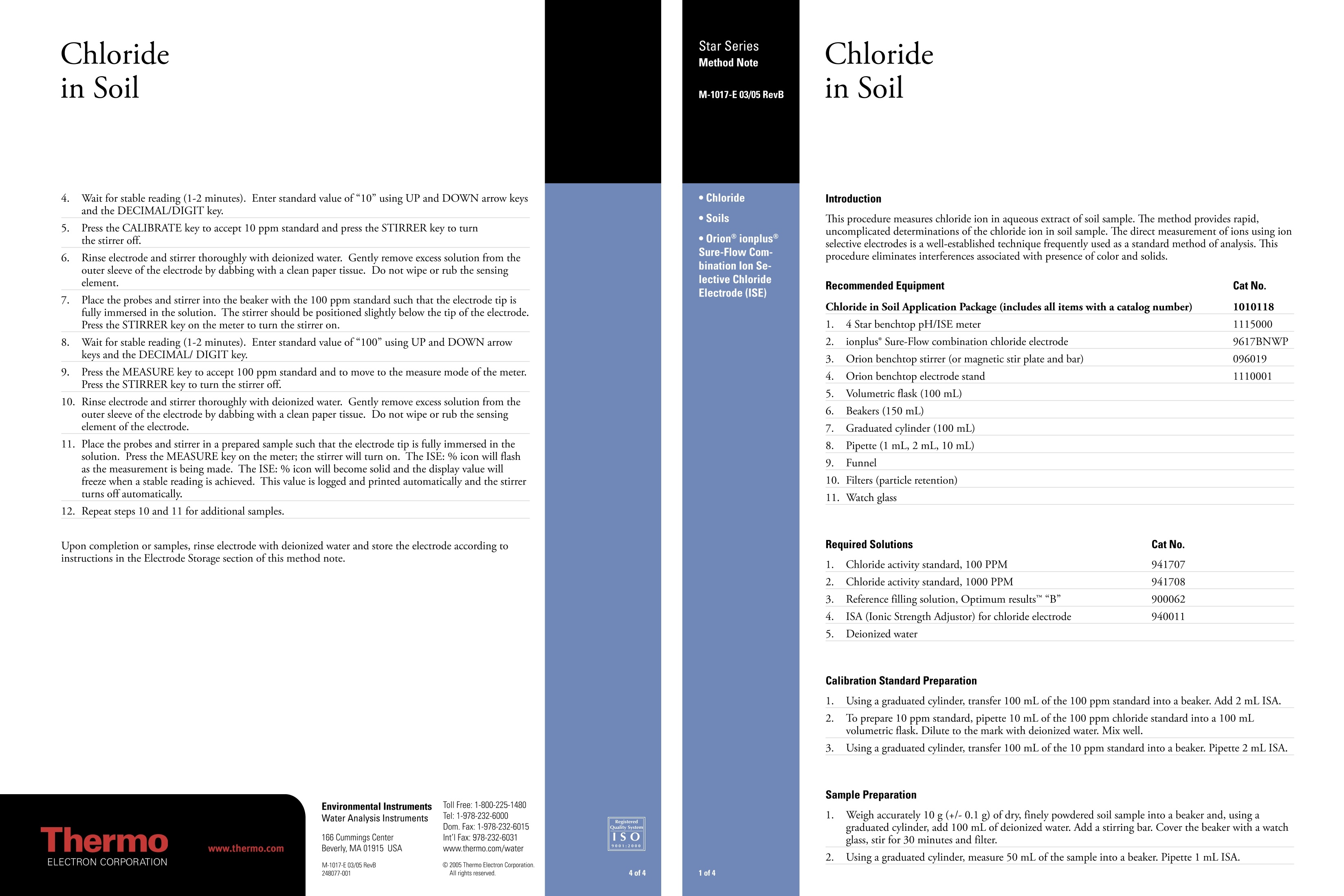

还剩1页未读,是否继续阅读?
赛默飞中国实验室产品事业部为您提供《土壤中无机阴离子检测方案 》,该方案主要用于土壤中无机阴离子检测,参考标准--,《土壤中无机阴离子检测方案 》用到的仪器有台式pH/ORP/ISE/溶解氧/电导率测量仪、Orion 4-Star台式(便携式)pH/离子浓度测量仪
推荐专场
相关方案
更多
该厂商其他方案
更多











